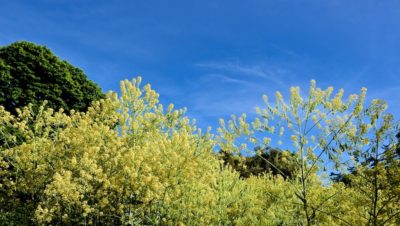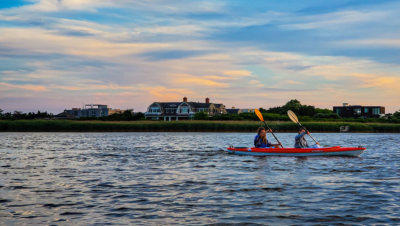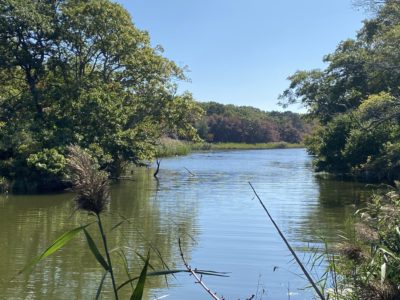Our Work / Stewardship
Habitat Restoration
The Peconic Land Trust is involved in habitat restoration and scientific studies at several of our preserves.
Coastal Ponds
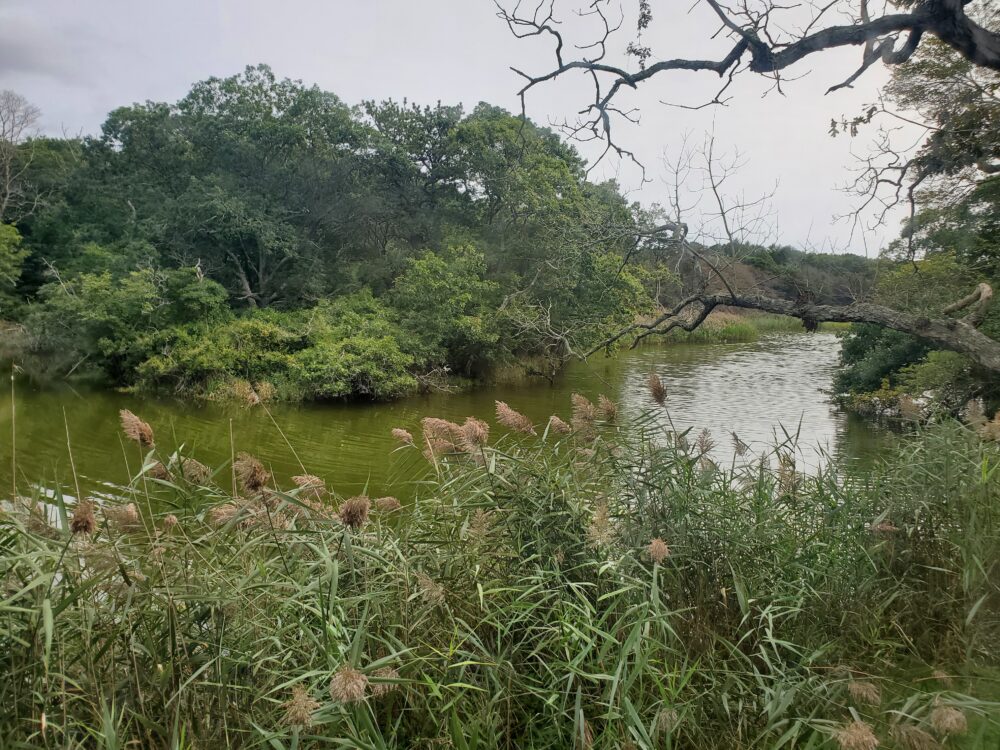
Locations: Georgica Pond (Georgica Pond Preserve) in Wainscott and Sagg Pond (Smith Corner Preserve) in Sagaponack
Georgica Pond: Nitrogen and phosphorus are major contributors to the harmful algal blooms that have stressed many of our local ponds and bays, including Georgica Pond. In 2020, the Trust acquired the Georgica Pond Preserve on the corner of Montauk Highway and Wainscott Stone Road in East Hampton. This former commercial property is being transformed into a viable wetlands area for a healthier Georgica Pond.
First steps included removing the current buildings on site and creating a restoration plan, which includes new plantings of native grasses and wetland vegetation. Its restoration will aid in improving the health of the pond and surrounding natural habitat by removing the building, septic system and leaching fields that have contributed to the degradation of the pond’s water quality. There will also be an opportunity to work with the Town of East Hampton and the Friends of Georgica Pond Foundation to address the flow of stormwater discharge into the pond.
In 2022, the Trust purchased 2.7 acres on Jones Creek in partnership with the Town of East Hampton. Located where Jones Creek flows into Georgica Pond, the property sits within the 4,000-acre Georgica Pond Watershed. Approximately 59% of the land within the watershed is developed. Protecting this land will aid in improving the health of the pond and the surrounding natural habitat by eliminating future development and ensuring a natural buffer that will reduce the flow of contaminants into the pond.
Sagg Pond: Like many of our ponds and bays, Sagg Pond has suffered from the effects of excessive nutrient loading from various sources. In 2019, Peconic Land Trust began building a coalition of partners committed to studying the root causes of algae blooms that plague the pond and to finding solutions to improve the resilience of this fragile, and precious, place.
That year, in partnership with the New York State Center for Clean Water Technology and Stony Brook University's Dr. Christopher Gobler, we launched a 4-year project to study the causes of these blue-green algal blooms. The results of this research will help the Southampton Town Trustees prepare a Sagg Pond Revitalization and Management Plan.
The preliminary findings confirmed that an over-abundance of nitrogen and other nutrients in the water leads to harmful algal blooms in Sagg Pond. The likely sources of nitrogen include fertilizers from farms and lawns, aging septic systems, and (to a lesser degree) atmospheric deposition.
In 2021, with the cause of the algae blooms identified, scientists with Cornell Cooperative Extension’s (CCE) Marine program initiated research to pinpoint the locations of nitrogen-rich groundwater seepage into the pond and potential remediation methods to filter out nitrogen before it reaches the pond.
Interested in learning more about our work at Sagg Pond? Check out Sagg Pond Watershed page for the latest updates
Contact: Matt Swain, Vice President
Shoreline Restoration
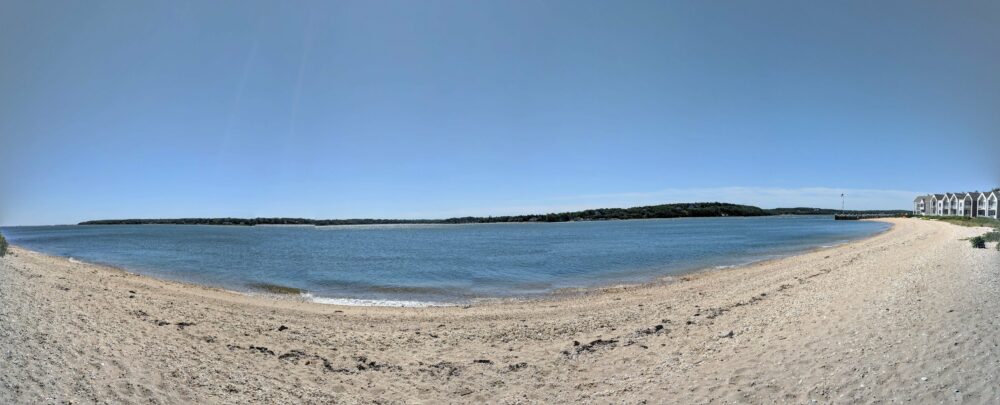
Panoramic view of Widow's Hole Preserve
Location: Widow's Hole Preserve in Greenport
Shoreline Restoration: Living shorelines use native plants and materials to protect the area rather than artificial shoreline hardening structures like bulkheads. Creating a “living shoreline” is critical to stabilizing erosion of our beaches and waterfront, an all-too-common occurrence due to the impact of climate change
Phase One: This phase included native habitat restoration, consisting of removing invasive non-native plants and planting a variety of native plant species. The Trust worked with Cornell Cooperative Extension on this restoration plan to reduce habitat fragmentation, provide foraging and breeding areas for wildlife, and protect water quality by reducing erosion and sedimentation and filtering out contaminants before they reach the waterways.
Phase Two (In Progress): During this phase, the living shoreline will continue to be improved, serving as a natural buffer for the impact of storms and runoff. Native plantings will provide erosion control and increased habitat. Additional funding for this phase was secured in 2021 from the Regional Economic Development Councils Initiative.
Interested in learning more about living shorelines? Check out our Zoom program from January 2021 to hear from three experts in the field.
Contact: Matt Swain, Vice President or Jessie McSwane, Senior Stewardship Manager
Want to dive deeper into the Widow’s Hole conservation story and restoration? Check out the Story Map below created by Matt Swain, Vice President and intern Nicholas Potter. The Story Map includes more on the history of the site, the conservation story, and the restoration — including a video produced by Cornell Cooperative Extension of Suffolk County on the installation of the Living Shoreline in the spring of 2019.
Beech Leaf Disease Monitoring
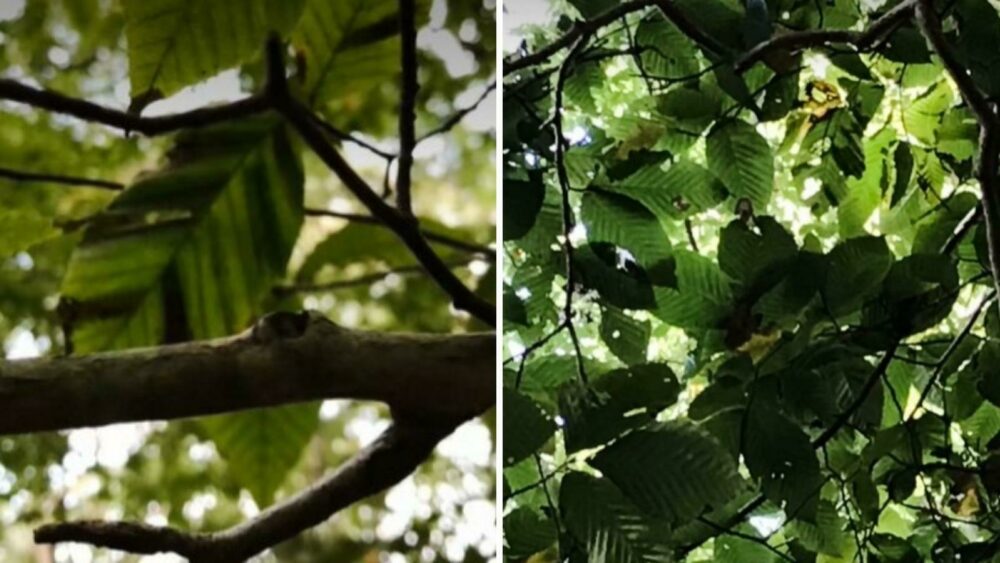
Locations: Silver Beech and Quail Hill Farm (woods) Preserves in Amagansett
Beech Leaf Disease – Treatment and Monitoring: Very little is known about the fatal beech leaf disease that infects the buds of beech trees. Working with certified arborists and foresters and Cornell Cooperative Extension, the Trust will test different treatment methods on trees in the preserves. Each Spring and Fall through 2023, we’ll revisit the trial sites to collect samples. Final reports will provide information as to possible management considerations and inform long-term stewardship needs for both the Trust and our partners.
Contact: Josh Halsey, Environmental Programs Manager or Jessie McSwane, Senior Stewardship Manager
To report Beech Leaf Disease in other areas, contact the New York State Department of Environmental Conservation.


